Cargando...
Recursos educativos
-
Nivel educativo
-
Competencias
-
Tipología
-
Idioma
-
Tipo de medio
-
Tipo de actividad
-
Destinatarios
-
Tipo de audiencia
-
Creador
Lo más buscado
- Mapa de España
- Instrumentos musicales en media
- Plantillas de letras
- Actividades de lógica
- Uso de g y j
- restas para niños
- Actividades cuerpo humano primaria
- Conocimiento del medio natural, social y cultural
- Ejercicios escolares para niños de 1 años
- Alexander Fleming
- Actividades acuáticas
- Juegos de tablas de multiplicar segundo
- Dibujos colorear otoño
- cómo estudiar
- Actividades de repaso primero
-

Observa. El poblat celta
EduBook Organización
- 2523 visitas
Observa la imatge i contesta les preguntes: Descriu el poblat celta. Fixa't en la manera com estava defensat i en la distribució dels habitatges. Quina forma tenien els habitatges celtes? Amb quins…
-
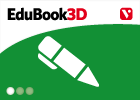
Investiga. Les abelles
EduBook Organización
- 2521 visitas
Als ruscos hi ha tres classes d'abelles: la reina; les femelles o obreres, i els mascles o abellots. Dintre del rusc, els individus de cada classe fan una tasca específica. L'abella reina és…
-

Per saber-ne més
EduBook Organización
- 2521 visitas
L'energia es transforma contínuament d'un tipus a un altre. Per exemple: L'energia elèctrica es transforma en calor en alguns aparells electrodomèstics com les estufes; en d'altres,…
-
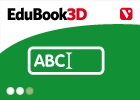
Complete. The location of Spain
EduBook Organización
- 2529 visitas
Complete these sentences about the location of Spain with the correct information: Spain is located in the of Europe. Spanish territory occupies an area of km². Spain occupies most of the , the and…
-
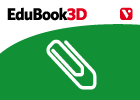
Iberian burial rituals
EduBook Organización
- 2522 visitas
The Iberians introduced new burial rituals. They cremated (burned) their dead and then put the ashes in a pottery urn. They then buried the urn with everyday objects like weapons, tools and coins. What…
-
True/false. Cells
EduBook Organización
- 2524 visitas
Decide if these sentences about cells are true or false: All living things are made up of very small components called cells. ➝ All very small living things are made up of just one cell. ➝ Cells are…
-

Introduction - Animals
EduBook Organización
- 2529 visitas
Animals belong to the largest and most diverse group of living things. There are over two million different animal species. Animals get the energy they need by eating food. They can move from place to…
-

True/false. Characteristics of arthropods
EduBook Organización
- 2525 visitas
Decide if the following statements are true or false: Arthropods have a skeleton. ➝ Arthropods have various numbers of pairs of legs. ➝ The skeleton of arthropods is internal. ➝ The skeleton of…
-
Final self-evaluation 08 - Animals
EduBook Organización
- 2526 visitas
Say which of the following groups of animals are vertebrates and which are invertebrates: cephalopods ➝ birds ➝ fish ➝ molluscs ➝ arachnids ➝ mammals ➝ gastropods ➝ amphibians ➝ reptiles ➝
-
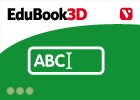
Initial evaluation 05 - Energy
EduBook Organización
- 2524 visitas
Complete the sentences with the correct words: fuels Non-renewable Sun less non-renewable Most of the energy on earth comes from the . A energy source is one that will run out. The that we use in cars…
Te estamos redirigiendo a la ficha del libro...













